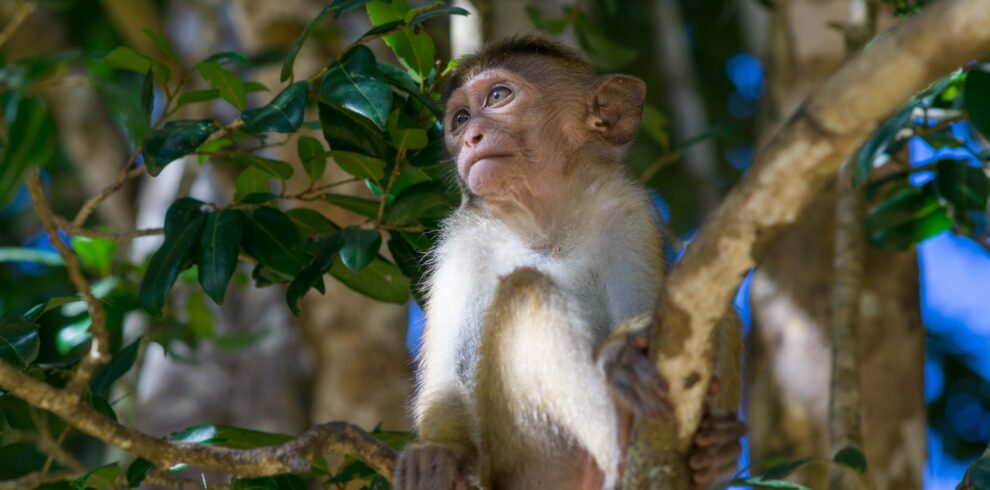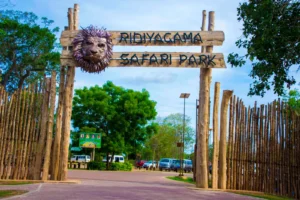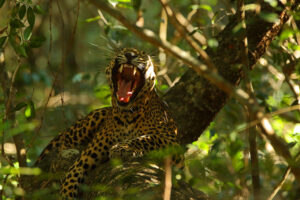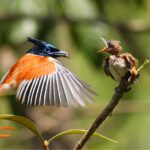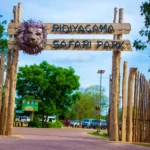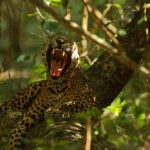Indulge in the marvels of the wild on a safari experience at Wilpattu National Park, the oldest and largest wildlife National park in Sri Lanka. On the northwest coast of the island, 180km north of Colombo, 30 km west of Anuradhapura and 26km away from Puttalam, Wilpattu National Park spans over a huge area of 131,693 hectares hence it being the largest National Park in Sri Lanka.
Previously declared a wildlife sanctuary in 1905, Wilpattu earned its status as a National Park on 25th February 1938. The northern section of Wilpattu was made as Wilpattu North Sanctuary on 7th November 1947. From 1988 the park was closed for security reasons due to the civil war in the country and it was reopened in February 2010 for local and foreign visitors.
In terms of its wildlife, Wilpattu National Park is a major destination for the wildlife enthusiasts who are eager to capture a glimpse of one of the largest populations of leopards in the world. A remote camera survey conducted during October of 2015 identified nearly 50 individual leopards roaming the park and hence it is world renowned for its leopard density. In addition to the leopards, Wilpattu is also a habitat for 31 species of mammals. Among these mammals the Sloth Bear stands out while Asian Elephants, Spotted Deer, Barking Deer, Jackals, Sambhur, Barking Deer, Mouse Deer, Wild Pig, Water Buffalo, Mugger Crocodiles, Peacocks and many other migratory birds give the park a unique diversity of its own.
Butterflies recorded in the park include the Great Eggfly, Blue Mormon, Common Mormon, Common Rose Great Orange Tip, Glad-eye Bushbrown, and Crimson Rose.
Another beautiful animal that could be spotted at the park roaming the grasslands is the Star Tortoise. In addition to that, Pond Turtles and Soft-Shelled Turtles can also be seen in the beautiful Villus of park.
In terms of the topography, Wilpattu is renowned for the huge number of lakes (Villus) found within the borders of the national park. It is calculated that the park has 60 lakes and hence the name Wilpattu itself is natural lakes in Sinhala. The topography of the park also consists of a 5 – 10 km coastal belt which is covered mostly with low scrubs and grasses such as salt grass. Further in towards the park, rather tall wooded forest can be found while a portion of ¾ is covered with dense forest and shrubs which is not accessible.
If you are a wildlife enthusiast interested in experiencing such wildlife as mentioned above, a safari through the Wilpattu National Park is a must do in your activity list. All arrangements can be made by Epic Sri Lanka Holidays for the ideal safari experience.
Safari Information in Wilpattu National Park
Wilpattu National Park Opening and Closing Times – 6.00 a.m to 6.00 p.m
Wilpattu Safari Duration – 3-4 hours
Wilpattu National Park Entrances
- Hunuwilgama Enterance (Main Gate)
Major eco-systems inside Wilpattu National Park
- Tropical Dry Mixed Evergreen Forest
- Salt marshes
- Scrublands
- Villu Wetlands
- Beaches
Area in Wilpattu National Park
- Total Area – 131, 700 hectares
Other information about Wilpattu National Park
Status – National park, Important bird area (IBAs), International Ramsar wetland
Altitude – Sea level to 152m
Annual Rainfall – 900mm
Monthly mean temperature range – 270C
Closest Towns – Nochchiyagama, Puttalam, Anuradhapura
Nearest Hospital – Rajanganaya Divisional Hospital
Access Roads to Wilpattu Block 1 (Palatupana Entrance)
- Colombo to Wilpattu via Puttalam (190km)
- Anuradhapura to Wilpattu (39km)
Major Attractions in Wilpattu National Park – Sri Lankan Leopards, Sri Lankan Elephant, Sri Lankan Sloth Bear
Best time to visit Wilpattu National Park – February to October.
Safari
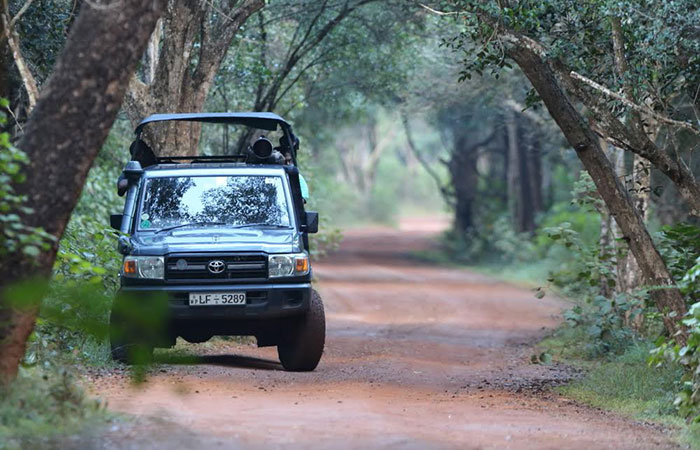
Wilpattu is the largest national park in Sri Lanka. Wilpattu National Park is well worth as a standalone attraction as…

